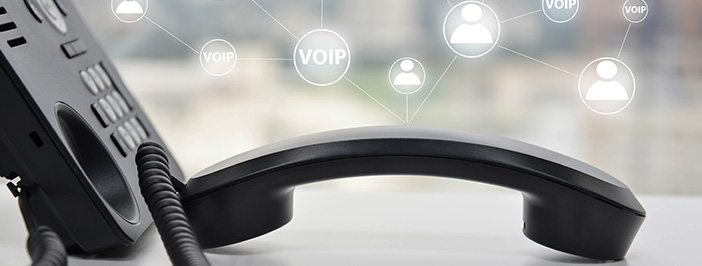How to Make a Seamless Transition to Hosted VoIP
Making the transition to an externally hosted VoIP system can be a big step for your business. But before you go off and purchase VoIP services, you’ll want to make sure you have the necessary infrastructure to handle what comes with it.
So what exactly do you need to prepare your network for VoIP?
Step 1: Improve Your Internet Connection
It’s important to keep in mind that VoIP stands for Voice over Internet Protocol. In other words, VoIP systems don’t use traditional copper lines like old phones do. They use RJ45 internet cables.
So, your business must have the adequate network capacity to support multiple different lines. You’ll need enough bandwidth to handle your day-to-day computer usage tasks as well as to handle the additional phone (voice) traffic.
Luckily, hosted VoIP systems are efficient by design. Depending on your desired call quality and concurrent usage, your internet bandwidth connection requirements may vary. Phone.com offers a helpful chart that can help you estimate your bandwidth needs:
| Number of Concurrent Calls | Minimum Required Bandwidth | Recommended Speed |
|---|---|---|
| 1 | 100 Kbps Up and Down | 3 MBps Up and Down |
| 3 | 300 Kbps Up and Down | 3 MBps Up and Down |
| 5 | 500 Kbps Up and Down | 5 MBps Up and Down |
| 10 | 1 MBps Up and Down | 5-10 MBps Up and Down |
For security purposes, it’s best to separate the voice and data internet circuits. Both are susceptible to cyberattacks, so it’s important to always keep network defense in mind.
Related: The Top 5 Reasons You Need Managed Security Services
Step 2: Get the Right Equipment
With hosted VoIP services, most of the server-side heavy lifting is done for you offsite. Your VoIP provider handles your actual server infrastructure. For you, that means less equipment to keep up with onsite.
But it also means you’ve got to take good care of what you do have.
You’ll need to operate and maintain your own local network and user devices, such as Power over Ethernet (PoE) switches, backup battery systems, cable managed patch panels, phones, headsets, and more.
Keeping this on-site equipment regularly maintained is the key to both extending the life of your VoIP system and minimizing operational costs.
Related: How Having a Business Continuity Plan is Vital
Step 3: Purchase Phones and Port Numbers
There’s a huge selection of VoIP phones available on the market. You can get phones as simple or advanced as you’d like – from basic handsets and dial pads to touchscreen interfaces and next-gen call management features.
You may already operate on a dedicated phone system (such as a hosted PBX). It’s inconvenient to have to swap out the phone numbers of the entire organization.
So, there’s both good news and bad news.
The Good News: You can port your existing numbers over to your VoIP system. All telephone service providers work with a local number portability (LNP) process to transfer the phone numbers you need to keep.
The Bad News: Phone providers are often uncooperative. It’s not something you’ll want to start at the last minute. The LNP process can take anywhere from a few days to several weeks to complete. That time can also become extended, depending on the willingness of your phone provider to work with you.
Your Hosted VoIP Service
Preparing for hosted VoIP system transitions isn’t always an easy experience. However, there are things you can do to make it easier on yourself and your network.
For starters, you can partner with a managed service provider to handle your transition for you. Picking an experienced provider means you can trust them to recommend and choose the best options from a varied list of voice providers.
Related: 3 Ways Managed Services Can Increase Business Results
So what’s in it for you? You get to keep focusing on running and growing your business as they think and act strategically on your behalf.





